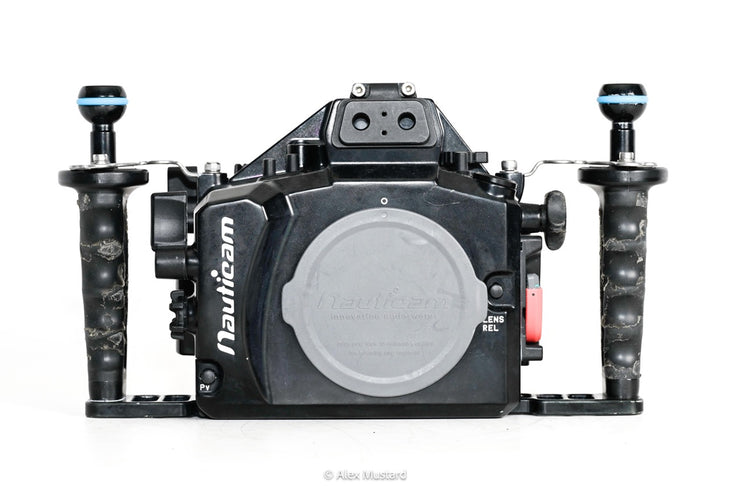CP.5172 Pre-owned Nauticam NA-EM1 Housing for Olympus OM-D E-M1 Camera
Introducing CP.5172 Pre-owned Nauticam NA-EM1 Housing for Olympus OM-D E-M1 Camera
The Olympus OMD- E-M1 Camera
The E-M1 can be thought of as two cameras in one. First, it is the successor to the very popular E-M5, building on the success of that m4/3 camera. Second, Olympus has positioned the E-M1 to replace its line of four thirds DSLR's, opting to support the line of excellent Olympus 4/3 in addition to m4/3 lenses. Olympus has successfully joined these two objectives into a camera that is attracting professional shooters who want DLSR quality in a smaller package.
The E-M1 sports up to 10 frames per second continuous shooting with AF locked or 6.5 fps with autofocus. Notably, it allows for 1/320 flash sync speed - very useful for underwater shooters working on shooting towards the sun. It also features built-in WiFi and access to a broad range of Olympus M.Zuiko m4/3 lenses and the excellent Panasonic m4/3 lenses. Via an adapter the camera is also designed to accept classic four-thirds (Zuiko) DSLR lenses, and even features a special phase detection focus mode for these lenses. The camera shines in its retro styled, dustproof/splashproof (and even freeze proof) magnesium alloy construction body.
The camera offers so many features that it is difficult to list them all. Focus peaking, image stabilization, programmable dual control dials, pre-viewable HDR, 12 in-camera art filters, interval shooting and Time Lapse Video are just a few of the features available.
Olympus OM-D E-M1 Key Camera Specifications
- 16MP CMOS Four Thirds format sensor with no low-pass filter
- ISO 100-25,600
- 3" 1.0m dot tilting LCD
- High resolution EVF
- Fast Contrast Detection AF + Phase Detection for 4/3 lenses
- Video with 1080p at 30fps
- In-Body 5-Axis Image Stabilization
The Nauticam NA-EM1 Underwater Housing
Nauticam is simply not content to rest on previous successes like the renowned NA-EM5. Given the large number of densely packed controls on the camera, the E-M1 housing presented a challenge in itself. The designers and engineers at Nauticam sought to not only meet this challenge, but take the human-machine interface a step further and keep the focus not on making it easier to make the housing, but to make the housing easier to use. An example is the new integrated handle system; with the pro shooter in mind, this housing is designed for use with the hand on the handle in a manner reminiscent of Nauticam SLR housings. The result is a housing that is easier to hold and is more stable, and is easier to shoot.
One of the hallmarks of Nauticam housings has always been the secure Locking Port Release system, unique in that it utilizes an internal bayonet system. Nauticam’s SLR housings have always featured a red locking lever that has become the symbol of Nauticam innovation. This iconic control has now come to the mirrorless world, making port changes faster, easy and just as secure. No wrestling, no twisting, no misalignment – just seat and lock.
The key shooting controls are all easily accessed with the right hand with very little finger movement required. What’s more, since virtually all of the controls on this camera are programmable, the shooter can customize exactly how the rig will respond to the touch. Shoot, change aperture, shoot, change shutter speed, flip to video, change shutter speed, start recording, change ISO – all easily accessible, and all without long reaches that can cause blurry images, mis-framing and shaky video.

